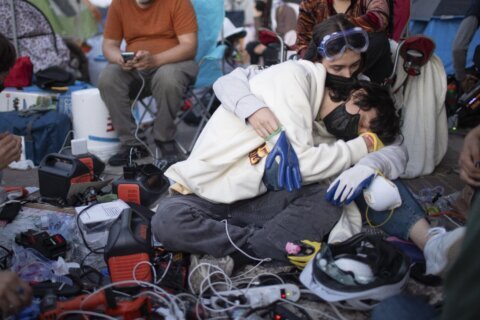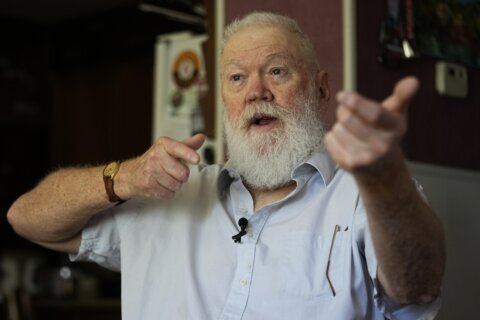When COVID-19 forced Claire Mansur to teach her fourth-grade reading students online instead of in the classroom, she thought about giving up as a teacher.
Students at Gladstone Elementary School in Kansas City, Missouri, which serves a large population of immigrants and refugees, weren’t logging on to her virtual lessons. They lacked the proper technology, their life at home was too chaotic amid the pandemic’s early months, or they just weren’t interested. Mansur felt disconnected from the children who did show up, unsure of whether they were retaining anything she was teaching them.
Then she got help adapting to online teaching from Instruction Partners, an education consulting nonprofit that is one of many organizations benefiting from a surge in foundation funds. Contributions to the nonprofit, including foundation grants, nearly doubled to $5.4 million in 2020 over the previous year.
Grantmakers are increasing spending on education, hoping to turn the pandemic into an opportunity to fine tune the use of educational technology, develop better lesson plans, and build connections with families and after-school programs that could help reduce students’ mental-health challenges due to COVID. They want to help school districts change the way people like Mansur teach, while reducing learning gaps. The support could help reduce teacher burnout and get students on solid footing at grade level without resorting to remedial instruction.
Underlying the soaring sums going into education grant making: Federal education statistics show that those hurt the most already have been students of color, those with disabilities, and those whose native language isn’t English.
Among the foundations making big boosts in spending are the Charles and Lynn Schusterman Family Philanthropies, which gave $105 million in 2020, an increase of $42 million from its education grants of the previous year. The Chan Zuckerberg Initiative gave $22 million to respond directly to challenges posed by the pandemic from the $150 million in education grants it made last year. Other increases include an additional $20 million in education grants from the Walton Family Foundation and the Carnegie Corporation of New York, which earmarked about $9 million of its education grants budget to help respond to the pandemic.
For Mansur, the foundation money is already making a difference. The coaching helped her gain the skills she needed and the confidence to stick with teaching.
“You basically become an actress,” Mansur said she learned from their training. “You have to make sure that things on the computer just keep moving quickly. Everything has to have more visuals, more colors, and a little bit more pizzazz.”
In April, Ana Ponce, executive director of Great Public Schools Now, began to raise money for the L.A. Education Recovery Fund, which links educators with nonprofit after-school programs for students struggling to keep up with their studies. The effort brought in nearly $10 million from grant makers including the Eli and Edythe Broad Foundation, the Leonard Hill Charitable Trust, and the Hearthland Foundation, founded by director Steven Spielberg and his wife and actor, Kate Capshaw. Smaller donors contributed $750,000 to the fund.
The money was used to support summer after-school programs run by 84 nonprofits at 500 schools and community centers in the Los Angeles Unified School District.
The philanthropic contributions are tiny compared with the $122 billion in American Rescue Plan Act dollars the federal government is directing to schools over the next three years. Leaders like Dan Weisberg, chief executive of TNTP, a nonprofit that provides teacher training in 300 school systems, say they hope an infusion of money will go toward making lasting changes in education instead of simply helping school districts limp through another year of COVID.
If some of the federal money goes to expand test projects supported by philanthropy that aim to make big changes in the way students are educated, rather than emergency short-term items like substitute teachers, help with bus schedules, and supplying laptops, nonprofit leaders hope to minimize some of the long-term damage caused by missed classes.
The losses and the disruption of the pandemic won’t be made up for in a single academic year, Weisberg says. But given the amount of money that is available now to close learning gaps, it could make a big difference.
“If we can’t help students excel who are coming to us with learning gaps, then probably the whole rationale behind public education being the great equalizer, and an avenue for kids to reach the American dream, is called into question,” he says. “This is a year with enormously high stakes.”
One key goal of the philanthropic support is to keep students performing at their grade level without putting them on a remedial track where they try to re-learn lessons given the previous year.
To bring students up to speed, nonprofits supported by foundation grants imagine a revamped educational system in which teachers regularly check the progress of each student and offer what LaVerne Evans Srinivasan, vice president of the Carnegie Corporation’s national program calls “just-in-time’ mini-lessons when needed rather than sending students back a grade level.
Srinivasan says teachers are being called upon to do a lot more because of the pandemic. They’re being asked to involve students’ families more, master updated course materials that incorporate new technology, analyze data to keep track of student progress, and pay closer attention to the mental-health needs of their students.
“This is not what teachers are accustomed to doing,” Srinivasan says.
To help teachers, Carnegie and other foundations have poured money into teacher training programs like ones offered by the Institute for Student Achievement. The nonprofit’s president, Stephanie Wood-Garnett, points to the institute’s work with the Kensington Health Sciences Academy high school in Philadelphia as an example of how philanthropy can help.
Three years before the pandemic started, Wood-Garnett says, the institute started working with the school. The entire student body is economically disadvantaged, according to a city of Philadelphia report, and nearly one quarter of them are not native English speakers.
The nonprofit worked to develop a culture at the school in which success was expected. In addition to their regular classes, students were split up into small “advisory groups,” where they could share their concerns about academics, their lives at home, or problems with other students. After the creation of the groups, the school reported a decline in suspensions and an increase in graduation rates.
The bonds between students and their staff advisers seem to have held up during the pandemic. Staff advisers were the main point of contact for families as lessons transitioned online.
Wood-Garnett fears that without similar work across the country, many students from poor families and students of color will have difficulty staying at grade level.
“These students were already disparately impacted. The pandemic just made it worse,” she says. “There are instances in which we have students who manage to thrive, but those are students who probably already have a pro learner, pro school mind-set and capacity.”
After struggling early in the pandemic, Mansur, the fourth-grade Kansas City teacher, has regained a sense that teaching is her calling. But she faces other challenges. She is back in the classroom, teaching a hybrid of in-person and virtual classes.
Like many teachers and grantmakers, Mansur worries about the long-term impact of the pandemic on learning. She’s unsure how her students are adjusting. Many were so excited to be back in school, she says. But she noticed that when lessons started getting tough, some students coming off a year of virtual learning didn’t stick with it.
“They really enjoy being back at school, but many of them are struggling,” she says. “They’re having a hard time motivating themselves.”
___
This article was provided to The Associated Press by the Chronicle of Philanthropy. Alex Daniels is a senior reporter at the Chronicle. Email: alex.daniels@philanthropy.com. The AP and the Chronicle receive support from the Lilly Endowment for coverage of philanthropy and nonprofits. The AP and the Chronicle are solely responsible for all content. For all of AP’s philanthropy coverage, visit https://apnews.com/hub/philanthropy.
Copyright © 2024 The Associated Press. All rights reserved. This material may not be published, broadcast, written or redistributed.







